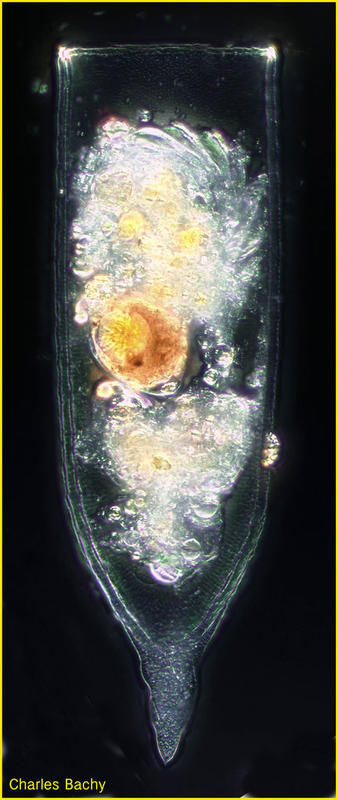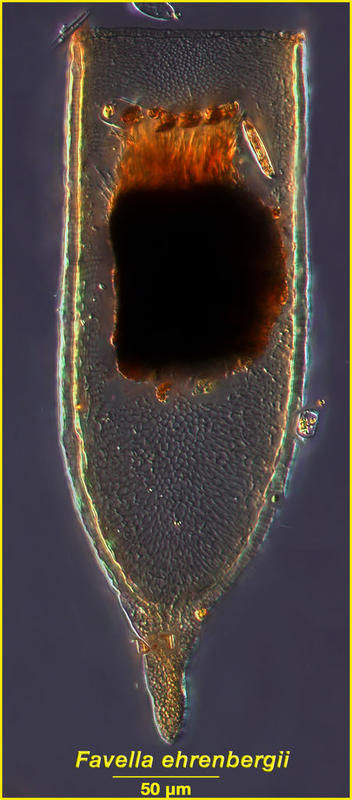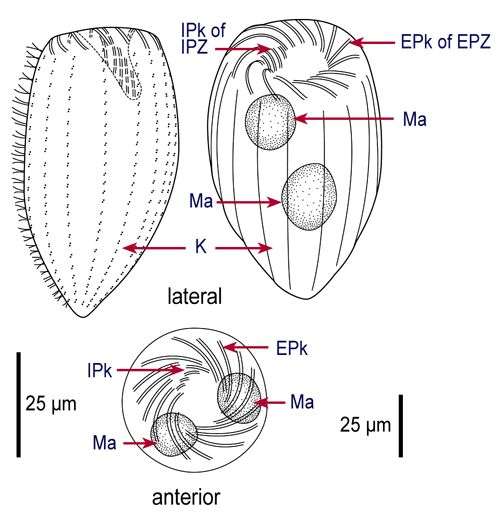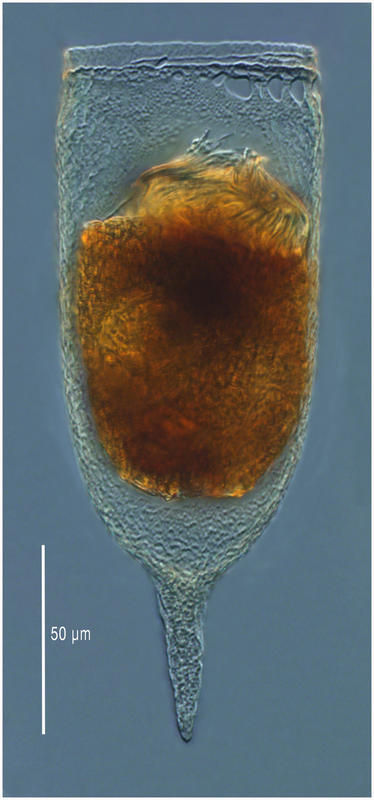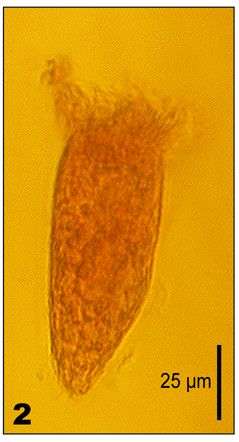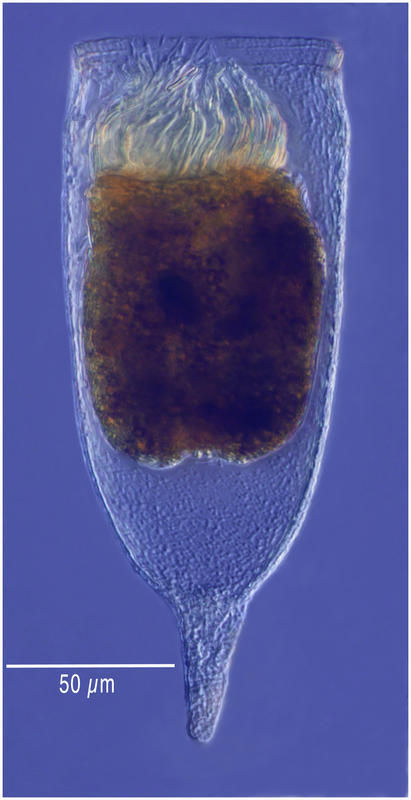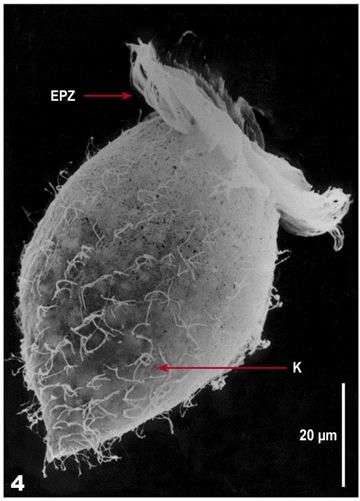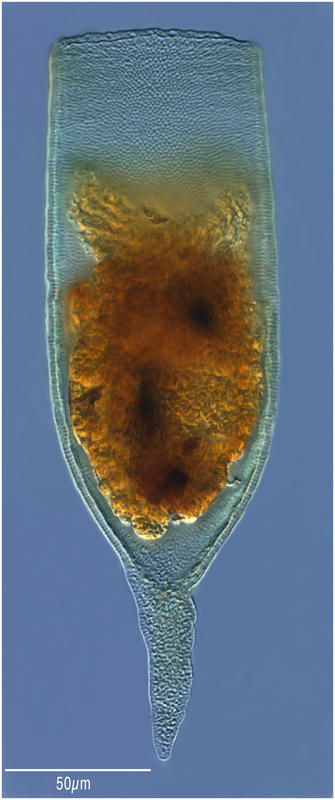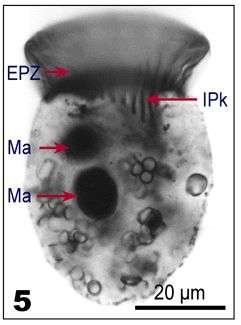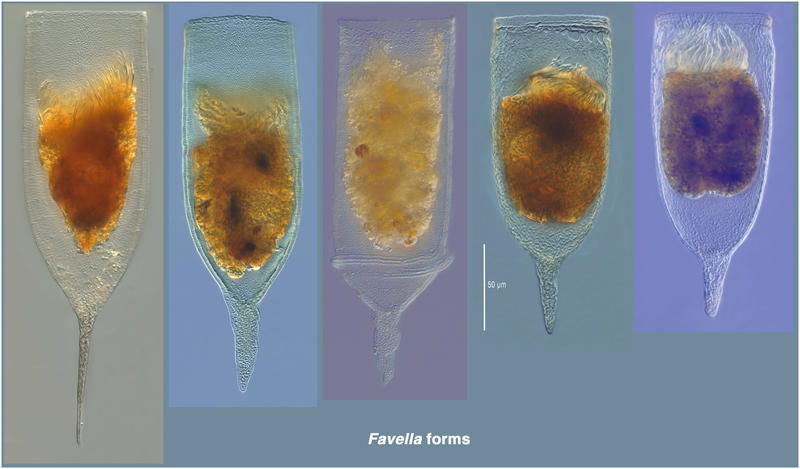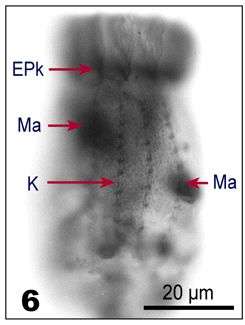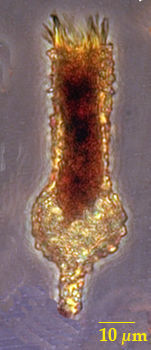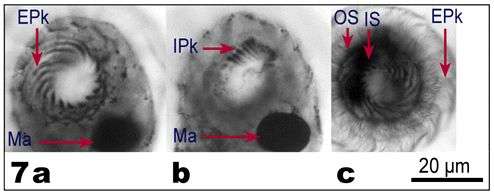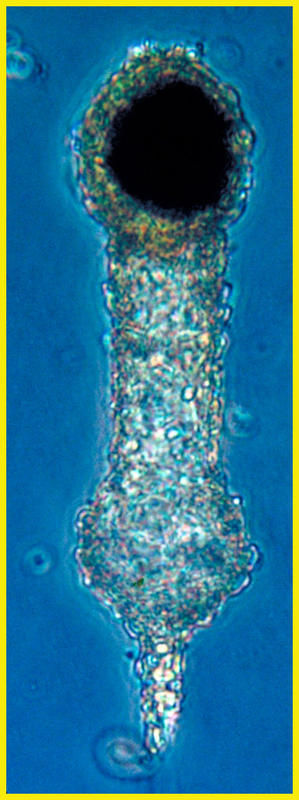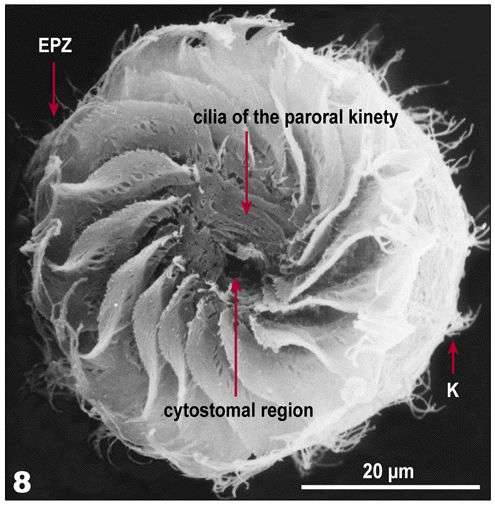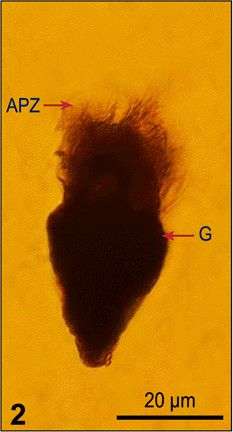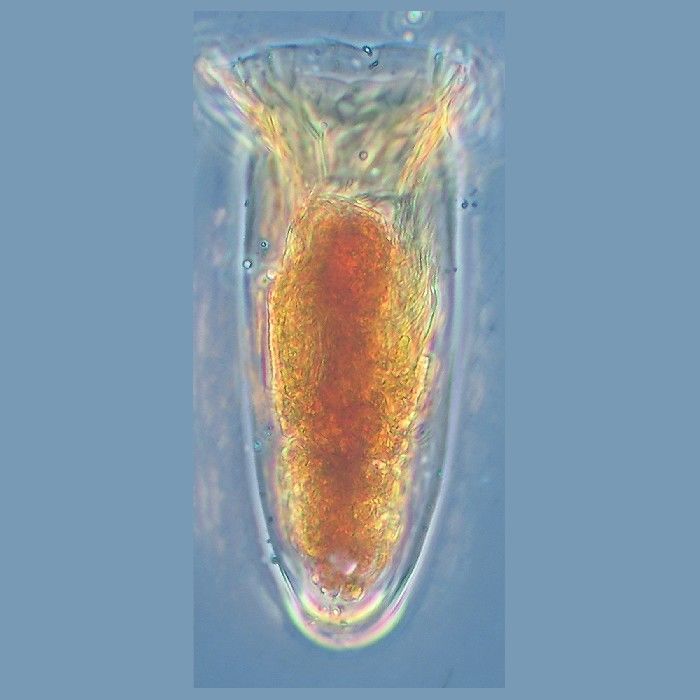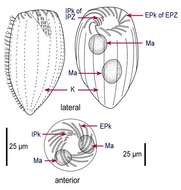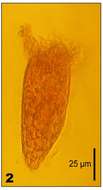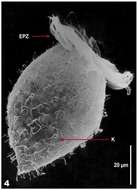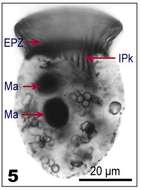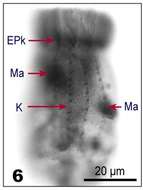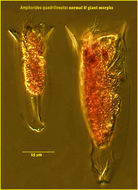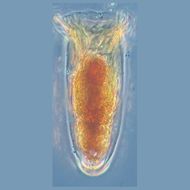-
Image by Charles Bachy of a specimen from the Rade de Villefranche
-
Fig 8: Protargol stains, lateral view, showing distinct extrusomes (E), the girdle kinety (G), and the macronucleus (Ma).
-
Specimen from the Scripps Canyon area in July 2009
-
Fig 1 Line drawings of protargol stained cells, showing kineties, oral structures and nuclei.
-
-
Fig 1: Strombidinopsis acuminatum Line drawing of protargol stained cells, showing kineties, oral structures and nuclei
-
Specimen from the Etang de Thau (Sète, France). Imaged using a 20x objective, lugol's-fixed sample.
-
Fig 2: Strombidinopsis acuminatum Lugol's fixed cell
-
From the Etang de Thau (Sète, France) in May 2012.
-
Fig 4: Strombidinopsis acuminatum SEM of Lugol's fixed cell
-
From the Etang de Thau (Sète, France) in May 2012.
-
Fig 5: Strombidinopsis acuminatum protargol stained cell, lateral view: Nuclei and internal polykinetids
-
The specimens were all found in samples from the mesocosm experiment WarmAcid. They appear to be variants of a single species, Favella ehrenbergii.
-
Fig 6: Strombidinopsis acuminatum protargol stained cell: Cell surface, showing the kineties
-
-
Fig 7a-c: Strombidinopsis acuminatum Apical view of protargol-stained cells, showing details of the oral structures: a. Above the cell (showing the cilia of the EPk); b. At the base of the cilia, showing the EPk; c. Within the cell (showing the IPk), OS - outer segment, IS - inner segment
-
Specimen from the Chesapeake Bay.
-
Fig 8: Strombidinopsis acuminatum SEM image, apical view of the oral region
-
In a sample from the Tara expedition (Station 68) there were 30 large cells for about 1000 'normal-size' cells.
-
Fig 1: Strombidium emergens Line drawing of protargol stained cell, showing kineties, oral structures, trichites, and nucleu
-
-
Fig 2: Strombidium emergens Lugol?s fixed cell
-
-
Fig 6: Strombidium emergens Protargol stained cell, lateral and ventral views, showing characteristic features


